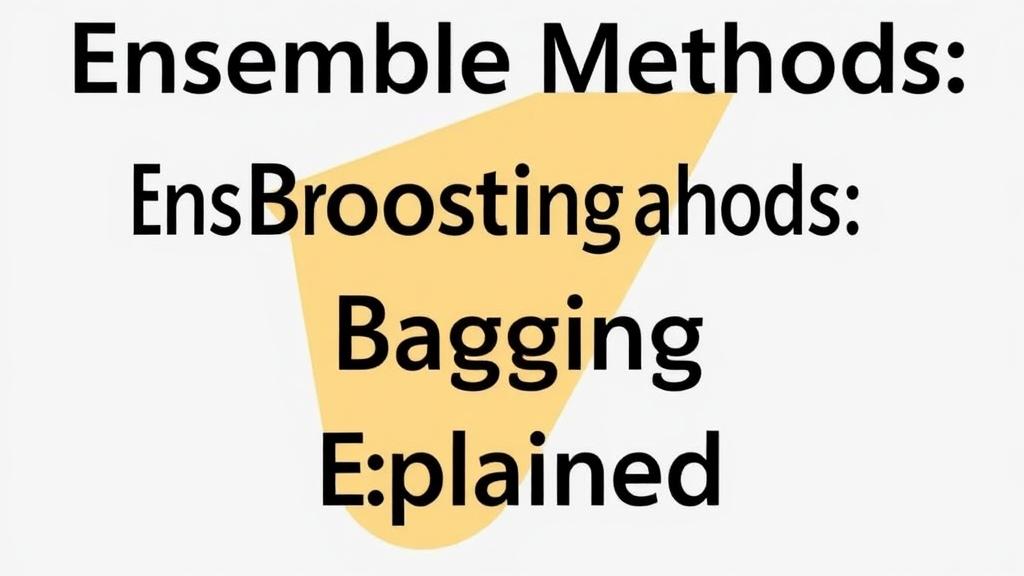Spotlighting the Power of Data
Data-driven insights are transforming the way we approach investing. Here’s how algorithms are reshaping the rules.
Introduction:
Are you eager to understand the intricacies of machine learning techniques? Do the concepts of “boosting” and “bagging” seem like daunting jargon? Fear not. This article will guide you through the labyrinth of ensemble methods, breaking down complex concepts into digestible chunks. We will delve into the realm of ensemble methods, focusing on two principal techniques, namely, boosting and bagging. These methods have revolutionized the machine learning world and are applied across various domains, from predicting stock prices to diagnosing diseases.
Ensemble methods are a critical part of machine learning. They combine multiple algorithms or the same algorithm multiple times to create a more powerful and robust model. This approach is based on a simple principle – the collective wisdom of a group is superior to that of an individual.
Why Use Ensemble Methods?
- They improve the stability and predictive power of the model.
- They help handle high dimensionality in data.
- They reduce the likelihood of overfitting by averaging out biases.
- They are capable of capturing complex non-linear relationships.
Section 2: Bagging: An Overview
Bootstrap Aggregating, more commonly known as bagging, is a powerful ensemble method. It works by creating multiple subsets of the original data, with replacement, and training a separate model for each subset. Later, the results from each model are combined, usually through a simple majority vote or averaging, to produce the final prediction.
Real-World Application of Bagging
For instance, consider a medical diagnosis system. The original data consists of various patient symptoms and the final diagnosis. Bagging would involve creating multiple subsets of this data, each with a different mix of symptoms and diagnoses. Each subset is then used to train a separate diagnosis model. The final diagnosis is then based on the majority vote from all these models, significantly increasing the accuracy and reliability of the predictions.
Section 3: Boosting: An Overview
Boosting, on the other hand, is an iterative technique that adjusts the weight of an observation based on the last classification. If an observation was classified incorrectly, it tries to increase the weight of this observation in the next round of training. Hence, boosting pays more attention to the examples that are harder to classify, aiming to improve the overall model’s performance.
Real-World Application of Boosting
Consider a spam email filter. In the first round of training, the boosting algorithm might misclassify some spam emails as ‘not spam’. In the next round, it increases the weight of these misclassified emails to ensure the model pays more attention to them. This process continues until the model’s performance can no longer improve or a predefined number of rounds is reached.
Section 4: Comparing Bagging and Boosting
While both bagging and boosting aim to create a collection of models, the key difference lies in how these models are created and combined.
- Bagging involves creating multiple subsets of the original data, training a separate model for each, and combining the predictions. It reduces variance and helps to avoid overfitting.
- Boosting, in contrast, builds models sequentially by altering the weight of the data samples, focusing on the harder-to-classify instances. It primarily reduces bias and can model complex relationships.
Conclusion
Ensemble methods, specifically bagging and boosting, have proven their effectiveness in various machine learning applications. By transforming a multitude of weak learners into a single strong learner, they allow us to create more accurate and reliable models. While bagging focuses on ‘diversity’ by creating individual models independently and then combining them, boosting focuses on ‘teamwork’ by building models that learn from each other. Understanding these techniques can unlock a new level of depth in your machine learning journey. So, the next time you stumble upon a complex problem, remember: two heads (or in this case, many) are indeed better than one!



